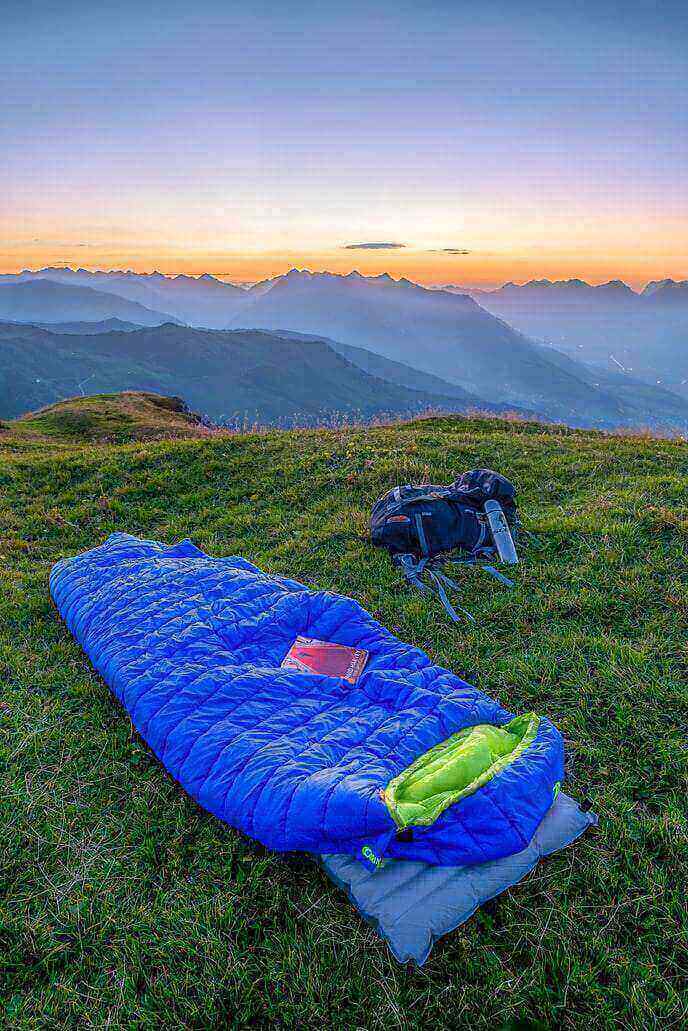Sleeping bags are ideal camping gears to bring on a long nature hike. They provide the comfort of a real bed, maximising whichever terrain people choose to spend the night on a trail.
Although there are no specific standards or testing guidelines for sleeping bags in Australia, it’s essential to find products marked with EN13537 or the European standard for temperature ratings. Besides the EN13537 standard, manufacturers also add their spin on the products they create.
Aside from the European standard indicating a sleeping bag is safe for the cold outdoors, what other factors should people buying sleeping bags look for?
1. Down vs Synthetic Insulation
Insulation is one of the most integral factors to consider when choosing a sleeping bag. As sleeping bags need to protect the people using them from various outdoor conditions like temperature, it’s vital to choose a product that ensures the most efficient regulation of body temperature possible even on the coldest nights.
A down insulation sleeping bag implores a higher weight-to-warmth ratio, making it more compact. Meanwhile, synthetic insulation should provide more warmth, especially in wetter weather conditions, using PolarGuard 3D, Lite Loft, Hollofil, or Quallofil materials.
2. Sleeping Bag Shape
There are several sleeping bag shapes, and all of them bring in various effects on the user. For example, if you prefer something efficient to keep you warm, a mummy-shaped bag should be perfect for you. However, keep in mind that it’s the type that feels constricting to most people—tossing and turning might not be efficient in it.
For those wanting more ventilation and flexibility, buying sleeping bags that provide the option to zip together might be the best choice. Only make sure that the zippers match the other person’s sleeping bag to ensure they lock to each other outdoors. Lastly, for tossers and turners, a semi-rectangular cut is an ideal bag shape as it allows you to move around better.
3. Materials Used
The most common materials used in creating sleeping bags are nylon, polyester, and nylon blends. However, sleeping bags with cotton insides are also popular for hikers. Keep in mind that the material is not suitable for outdoors, only for backpacking or remote outdoor use.
4. Lining Used
A sleeping bag’s lining is also an important factor to consider. Most people look for comfort, warmth, and breathable linings to ensure a good sleep at night. You should opt for a differential cut, a type of inner lining sewn smaller than its outer shell for maximum insulation.
Meanwhile, an insulated draft should work well instead if you prefer to keep the warmth on your neck and shoulders. Lastly, dark-coloured linings are most suitable for outdoors as they dry up better when exposed to the sun.
5. Added Features
Extreme weather conditions are something to consider when choosing the perfect sleeping bag. You can ensure to experience the best warmth when you pick a sleeping bag with zipper draft tubes, shoulder collars, hoods, and a temperature rating of 0 Fahrenheit or below.
However, it’s better for sleeping bags used in winter to have at least a temperature rating of -15 to -40 Fahrenheit.
Conclusion
Choosing a sleeping bag isn’t all about the user’s comfort in sleeping at night. Instead, the factors should include how bearable it will be for the user to sleep in extreme weather conditions. Hiking is a survival sport, and sleeping bags should aid the journey to the top.
Adventureco is a camping gear and adventure wear shop in Australia. Our care for the environment goes beyond our products, aiming to team up with the best manufacturers in the market to produce top apparel for a better outdoor experience. Visit one of the best hiking shops in Brisbane for high-quality sleeping bags and get free shipping for orders above $99!

